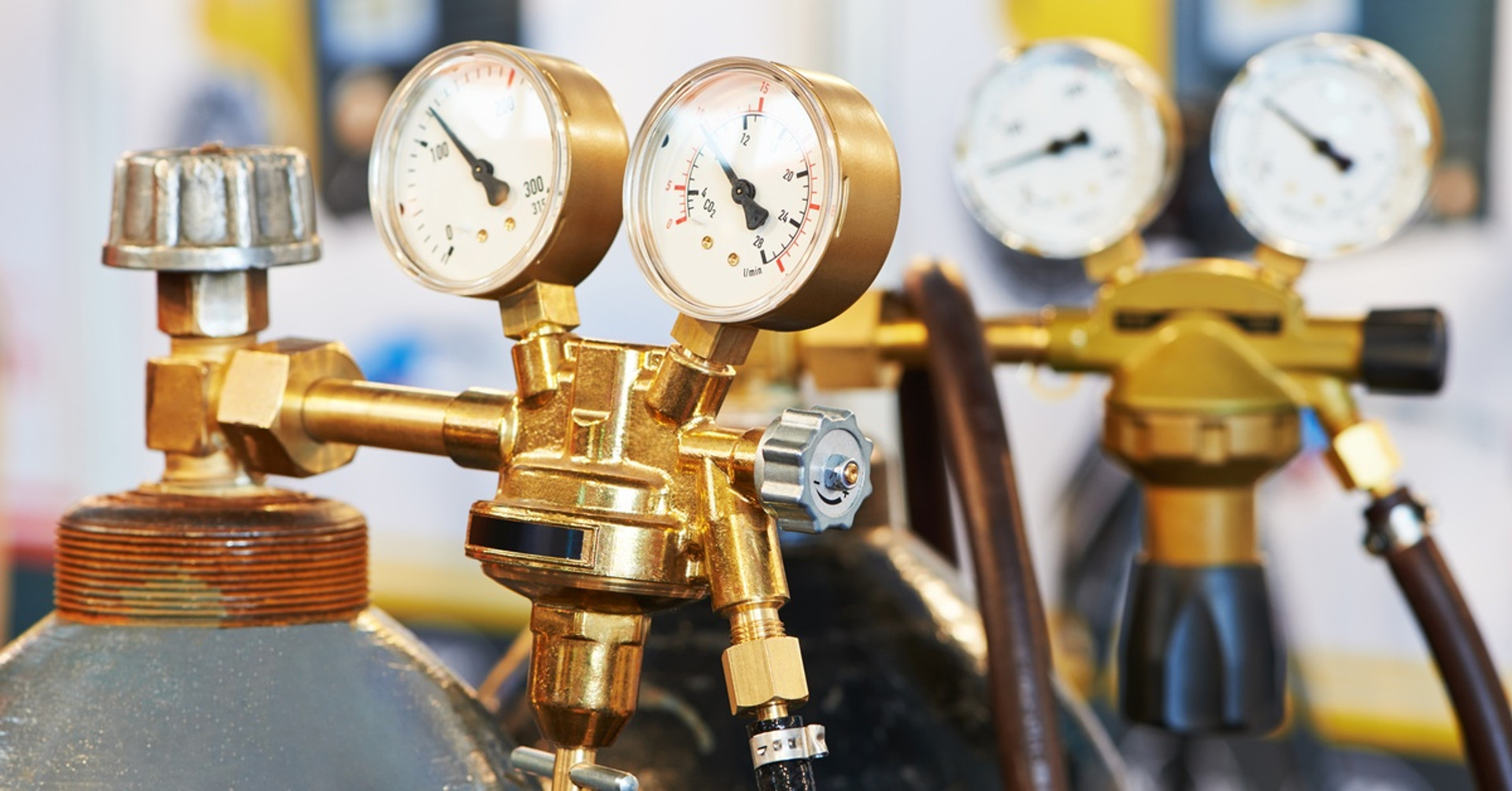Why Gas Pressure Regulators Are Important for Lab Safety
Precise regulators turn hazardous cylinder pressures into controlled delivery conditions that keep laboratories safe and productive. Overpressure, toxic releases, and flame instability cause injuries, destroy instruments, and erase data. Run safer operations by learning how regulators prevent accidents, protect people, support instrument integrity, and comply with safety standards.
Prevents Dangerous Overpressure in Laboratory Systems
Gas regulators are important for lab safety because they hold outlet pressure at safe setpoints during demand swings, which stops hose whip and line rupture. Single cylinders start near 2,200 psi (pounds per square inch). Burners, GC columns, and manifolds require between 30 and 60 psi. Two-stage designs limit decay as cylinder pressure falls, so you avoid constant readjustment and sudden spikes.
Relief devices and burst disks add a final safeguard when abnormal heat or seat wear pushes pressures upward. You gain clearer setpoint control when you size regulators to expected flow, rather than chasing instability with oversized bodies and tiny openings. For added resilience, place a secondary regulator near each instrument to localize any upset.
Protects Laboratory Personnel From Toxic and Flammable Gas Hazards
Hydrogen, chlorine, ammonia, and silane demand disciplined control over both pressure and flow. Gas regulators handle hazardous gases, metering, and reducing exposure and fire risk during start-up or shutdown. Vented diaphragms route leaks to exhaust and protect analysts who work inches from detectors and valves.
At MESA Specialty Gas, we supply calibration gases and regulator equipment as a specialty gas company for environmental labs, petrochemical refineries, pharmaceutical quality control, semiconductor fabs, power generation, and biotechnology. We help you match materials to gas identity, so incompatible elastomers or oils never contact oxidizers. Purge assemblies with check valves stop backflow into clean regulators, which preserves worker safety during cylinder changeouts.
Maintains the Integrity of Sensitive Laboratory Equipment
Analytical systems depend on a stable inlet pressure to produce repeatable data. Gas regulators are important for lab safety because they prevent detector drift, flameouts, and vacuum surges that damage columns or pumps, which protects uptime and results. Tight control also stops moisture ingress into sensitive paths, so reactive gases avoid forming corrosive residues.
Creep testing reveals worn seats that allow outlet pressure to climb with downstream valves closed; you catch faults before they harm mass spectrometers or gloveboxes. Point-of-use regulation with short lines cuts dead volume, which improves response time and stabilizes baselines. Clear labeling of maximum delivery pressure keeps technicians aligned with safe operating limits during method changes.
Supports Compliance With Laboratory Safety Standards
OSHA, NFPA 45, and CGA guidelines expect documented regulator selection, cleaning, and inspection. You maintain compliance when you record serial numbers, service dates, torque values, and oxygen-clean status, plus gauge replacements for cracked lenses or sluggish needles. Dedicated CGA connections for each gas family stop cross-fitting and enforce accountability during audits.
Leak tests after every cylinder swap reduce liability and protect workers. A consistent sequence—pressurize to setpoint, isolate, apply approved leak solution or probe with an electronic detector, then log results—keeps records defensible. Storage racks with clear gas-specific tags prevent mix-ups and support rapid traceability when auditors request proof.
You deserve partners who treat safety as a deliverable, not a slogan. We at MESA Specialty Gas provide critical calibration gases, regulators, and accessories that align with demanding methods and tight timelines. Contact our team for tailored guidance on regulator selection, installation, and maintenance that fits your workflow.

